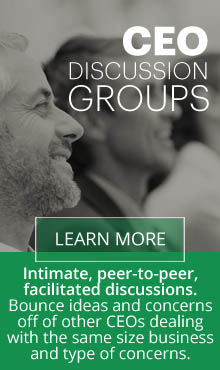In the last business tip we talked about big hairy audacious goals (BHAG’s) a term coined by Jim Collins and Jerry Porras in their book Built to Last and discussed again in Jim’s book Good to Great. We mentioned that it’s management’s job to help individual employees align their personal goals with the company’s goals. When personal BHAG’s dovetail into the company BHAG, amazing things happen. People love to work there. Productivity soars. Retention is no longer a problem. The company realizes economic gain and the customers benefit from the ease of doing business, great customer service and reduced cost (remember The Speed of Trust by Stephen H.R. Covey)
So how can managers help individual employees align their personal goals with the company’s goals? There are several answers to that question, but they all start with great communication. The manager has to really listen to each employee when s/he asks,
What matters most to you?
Some employees will answer ‘time with my kids’, or ‘establishing financial security’, ‘building my own business someday.’
BHAG’s change over time and vary as one’s motivation, life experiences and accomplishments change. A good manager is familiar with Maslow’s work. Abraham Maslow postulated that human needs fall into 5 categories. The first is Physiological. Once our needs for food, water, shelter, etc. are met, we look for Safety and Security (the second), hence, financial security and safety from terrorists or dangerous products in a modern world. Thirdly, our needs shift into Social Acceptance and being loved, having friends and family, and fitting into a peer group. Then our focus starts going to the fourth level of need, Self Esteem, self-confidence, competence, independence, positive self-image. The last stage is called Self-Actualization, becoming the best you can be, becoming excellent at everything that makes you unique. BHAG’s at level five are not always visible by someone still at level 2 because they are not there yet. This is good for company managers and HR people to know as they try to inspire that BHAG dovetailing mentioned above.
A great manager treats everybody differently and respects where each person is along this continuum of personal needs. Here are a few examples: Some people need to make money because they’re living hand-to-mouth. (Level 1) or need benefits to extend their financial security.(Level 2) Others want time with their families and friends(Level 3). Others want empowerment with regular feedback but no micro-management. (Level 4) Others want to excel, achieve their best and make a difference in the world.(Level 5) And I think many people have elements of several needs at the same time, even though they may have a predominant need. Each manager will do a better job of inspiring and empowering his or her employees if s/he knows each employees’ BHAG’s, predominant needs and what motivates him or her. One size does not fit all. When an employee is treated like a unique individual and it is clear that his/her predominant needs and goals are understood by his/her manager, most personal goals dovetail with company goals effortlessly. With mutual respect and concern the manager is looking to give to the employee what s/he needs, and the employee then cares about his/her contribution to the company.
There are a number of factors that go into building a great company. This is one of the most basic because in a knowledge based society, the biggest asset of any company is its employees. Poor managers are the number one reason people leave their jobs. Managers who don’t demonstrate that they are concerned with their employees needs and goals are creating huge costs for their companies in terms or turnover, retraining, rehiring, poor customer service, customer attrition, new customer acquisition costs, etc.

 Jeri Quinn from Driving Improved Results is an executive coach, management consultant, speaker and author who focuses on communication in her work with executives and companies. She is the author of The Customer Loyalty Playbook, 12 Game Strategies to Drive Improved Results in Your Business. With more than 40 years as a serial entrepreneur.
Jeri Quinn from Driving Improved Results is an executive coach, management consultant, speaker and author who focuses on communication in her work with executives and companies. She is the author of The Customer Loyalty Playbook, 12 Game Strategies to Drive Improved Results in Your Business. With more than 40 years as a serial entrepreneur.

